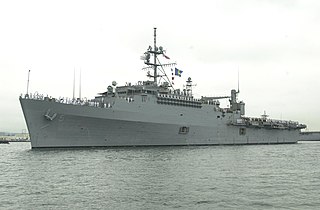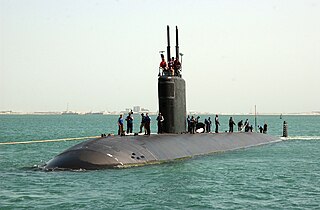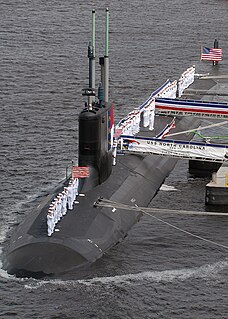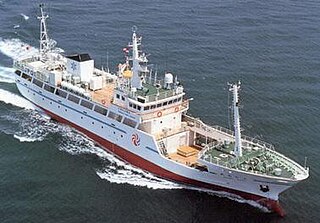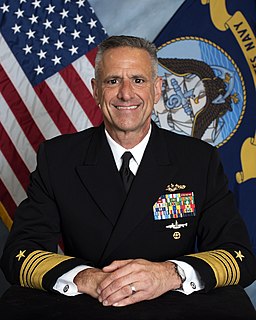This article needs additional citations for verification .(February 2008) (Learn how and when to remove this template message) |
 USS Greeneville (SSN-772) off the coast of Honolulu, Hawaii carrying the ASDS. | |
| History | |
|---|---|
| Name: | USS Greeneville |
| Namesake: | Town of Greeneville |
| Ordered: | 14 December 1988 |
| Builder: | Newport News Shipbuilding |
| Laid down: | 28 February 1992 |
| Launched: | 17 September 1994 |
| Sponsored by: | Tipper Gore |
| Commissioned: | 16 February 1996 |
| Homeport: | Pearl Harbor, Hawaii, U.S. |
| Motto: | Volunteers Defending Frontiers |
| Status: | in active service |
| Badge: |  |
| General characteristics | |
| Class and type: | Los Angeles-class submarine |
| Displacement: | |
| Length: | 362 ft (110 m) |
| Beam: | 33 ft (10 m) |
| Draft: | 31 ft (9.4 m) |
| Propulsion: | 1 × S6G reactor |
| Complement: | 12 officers, 98 men |
| Armament: |
|
USS Greeneville (SSN-772) is a Los Angeles-class fast attack submarine, and the only vessel of the United States Navy to be named after Greeneville, Tennessee. [1] The contract to build the boat was awarded to Newport News Shipbuilding and Dry Dock Company in Newport News, Virginia, on 14 December 1988, and her keel was laid down on 28 February 1992. She was launched on 17 September 1994, sponsored by Tipper Gore, and commissioned on 16 February 1996.

The Los Angeles class boats are nuclear-powered fast attack submarines (SSN) in service with the United States Navy. The submarines are also known as the 688 class, after the hull number of lead vessel USS Los Angeles (SSN-688). They represent two generations and close to half a century of the Navy's attack submarine fleet. As of 2018, 35 of the class are still in commission and 27 are retired from service. Of the 27 retired boats, 12 were laid up half way through their projected lifespans, and another five also laid up early, due to their midlife reactor refueling being cancelled, and one was lost due to a fire. Seven have been scrapped and two are being converted to moored training ships. A further four boats were proposed by the Navy, but later cancelled. The class has more active nuclear submarines than any other class in the world. Submarines of this class are named after American towns and cities, such as Albany, New York; Los Angeles, California; and Tucson, Arizona, with the exception of USS Hyman G. Rickover, named for a US Navy Admiral. This was a change from long-standing tradition of naming attack submarines for creatures of the ocean, such as USS Seawolf or USS Shark.

An attack submarine or hunter-killer submarine is a submarine specifically designed for the purpose of attacking and sinking other submarines, surface combatants and merchant vessels. In the Soviet and Russian navies they were and are called "multi-purpose submarines". They are also used to protect friendly surface combatants and missile submarines. Some attack subs are also armed with cruise missiles mounted in vertical launch tubes, increasing the scope of their potential missions to include land targets.

The United States Navy (USN) is the naval warfare service branch of the United States Armed Forces and one of the seven uniformed services of the United States. It is the largest and most capable navy in the world and it has been estimated that in terms of tonnage of its active battle fleet alone, it is larger than the next 13 navies combined, which includes 11 U.S. allies or partner nations. It has the highest combined battle fleet tonnage and the world's largest aircraft carrier fleet, with eleven in service, and two new carriers under construction. With 336,978 personnel on active duty and 101,583 in the Ready Reserve, the U.S. Navy is the third largest of the U.S. military service branches in terms of personnel. It has 290 deployable combat vessels and more than 3,700 operational aircraft as of June 2019, making it the third-largest air force in the world, after the United States Air Force and the United States Army.
Contents
- Namesake
- Boat's history
- The Ehime Maru incident
- The Saipan incident
- USS Ogden collision
- Post-2002 Service
- Awards
- See also
- References
- External links
Greeneville collided with a Japanese fishing vessel, Ehime Maru, off the coast of Oahu in February 2001.




